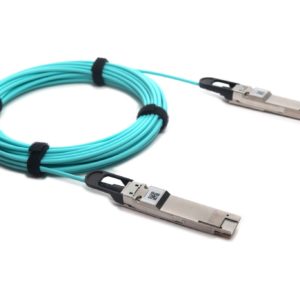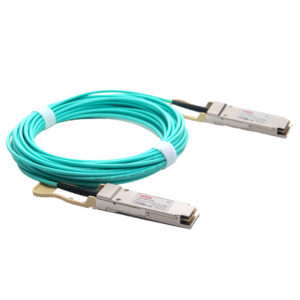On the Threshold of Exciting New Discoveries
We’re used to commercials starring Alexa, Google apps directing Uber drivers to faster routes, and phrases like artificial intelligence and machine learning added to the vernacular. But there’s more on the menu.
Although machines that take money by flashing a barcode now replace workers whose jobs have been automated, new technologies are not just causing anxiety. They’re also solving problems.
Fiber Optics and Technology
Fiber optic networks are quietly powering cutting-edge technologies. High performance computing (HPC), and related applications like machine learning (ML) and artificial intelligence (AI), are among the most promising. The industry has responded to these needs by coming out with higher performing and faster modules that make these new technologies possible. Simultaneously, emerging technologies are accelerating the growth of fiber optic markets. According to Fortune Business Insights, Emergen Research, and others:
- The global fiber optic market is predicted to grow at a compound annual rate of 10%, from $4.5 billion to $9.5 or $9.73 billion in 2028.
- The US plans to invest $625 million over the next five years in centers that research artificial intelligence and quantum computing.
The Need: Why Fiber Optics
When businesses relied more and more on remote workforces and consumers moved to e-commerce due to Covid-19, the digital economy was bolstered. With that came increased demand for more data processed quickly longer distances. According to Infiniweb, bipartisan legislation in response to the economic disruption caused by the pandemic allocates nearly $28 billion to expand broadband networks, underscoring the importance of faster and faster data transmission and Internet speeds in the 21st century.
Increased demand for instant information has become critical for companies like Google and Facebook, as it is for scientists and academic researchers who find these technologies invaluable in meeting the complex demands of the 21st century.
High-performance computing (HPC) and Artificial Intelligence
High performance computing (HPC) is the capacity to process data and perform complex calculations at high speeds. One well-known incarnation is supercomputers. Around for a half century, supercomputers have, say experts at Hewlett Packard, performed extraordinary tasks: simulating nuclear tests, powering autonomous cars, and mapping the human brain. Oil exploration, finance, and online advertising have already harnessed their powers for routine operations.
The latest incarnation of supercomputer is the exascale computer. With 1000 times more computing power than earlier supercomputers, the exascale will perform a quintillion floating-point operations per second. Industries are combining exascale capabilities with artificial intelligence capabilities; both require the ability to crunch massive amounts of data.
Researchers expect a wide array of uses for these new super-computing capabilities, including medical, pharmaceutical, broadcasting, automotive and weather forecasting applications.
Fiber optics innovations are essential to these technologies.
Advantages of Fiber Optics for HPC
- Low latency: More information processed, more complex calculations performed with minimal lag time are essential for HPC operations. Vitex analog chip-based AOCs offer low latency while also lowering power consumption. Users of HPC leverage Infiniband architecture for increased throughput and low latency.
- Reliable information transmission over long distances; low attenuation or weakening or loss of signal strength. Signals sent over copper cables degrade much faster than those sent over fiber.
- Low BER, high throughput: BER (or bit error rate) is a measure of test signal quality and computes the number of errors received in data transmission. High throughput and low error rates are essential to HPC operations.
- High Data Transmission Speed: Data transmission rates of fiber optics is 1000 times that of copper cable (A. Golbazi, Chair, Electrical and Computer Engineering, Univ. of New Haven).
- Higher bandwidth means greater capacity for transmitting information. Transceivers are increasingly more complex and sophisticated. The latest feature higher bandwidth.
- More Electronic Security: Fiber optic networks, unlike copper, provide a high level of electronic security. When you’re transmitting massive amounts of data, cybersecurity is a real concern, particularly for sensitive information (medical, financial, etc.).
- Low Electromagnetic Interference: Fiber cables neither emit electromagnetic waves nor are damaged by them.
Optical transceivers running on higher speeds (with 800G already adopted operational at hyperscalers like Google and Facebook), have lower latency, higher bandwidth, and lower BER.
Vitex, based in northern New Jersey, offers many transceivers and AOCs optimized for HPC applications. Our staff of highly trained engineers can provide US-based technical support and customized solutions. Our clients include industry leaders in data communication and HPC, AI and ML. Jumpstart your next project now! Contact us at info@vitextech.com.
Related Products



